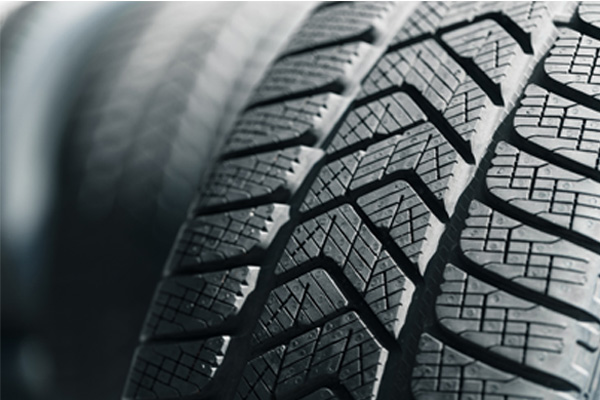When shopping for tires, most of the time, the service advisor you are speaking to can pull up your information and easily tell you the size of the tires on your car. You most likely haven’t given tire size much thought. That being said, you may run into a situation, like getting a flat, where you need to know your tire size. Finding this information is easy as long as you know where to look and what to look for. In this guide, we are going to tell you how to figure out the size of your tires quickly and easily when they are on your car!

Where Can I Find My Tire Size?
Sizing information for your tire can be found on the tire sidewall. It will be a series of numbers and letters, typically in the following format: P235/45R 17.
How are Tires Sized?
Tire sizing is split into three categories, each describing a different dimension of the tire. Width, aspect ratio (A/R), and wheel diameter all have their own meaning, and we’re going to break down what each category stands for below.
Tire Width
The first number you’ll see is the width of the tread, which is the part of the tire that contacts the road. In the above example size, “235” means that the tire has a width of 235 millimeters.
Tire Aspect Ratio (A/R)
The second number represents the sidewall aspect ratio or height. The sidewall is measured as a percentage of the tread width. In the above example, the number 35 after the slash means the tire’s sidewall height is 35% of the tread width. A lower aspect ratio corresponds to a lower-profile tire.
Wheel Diameter
The final number in the sequence is the diameter of the wheel the tire is mounted on in inches. In the above example tire, the 17 indicates the tire fits on a 17-inch wheel.
What Do the Letters Mean?
You probably noticed the letters mixed into the size numbers. The first letter represents the tire type, and the second number indicates the construction.
Tire Type
The very first letter(s) in the tire sizing represent the intended market and vehicle type for the tire. In the above example, P stands for P-Metric, which means the tire meets passenger car standards in the United States.
If you see “LT”, the tire is intended for use on light trucks and will often have higher pressure requirements than P-rated tires.
If a size rating has no letter, it is a European Metric tire. There are some differences in load capacity between European and P-Metric tires.
Tire Construction
Unless you are dealing with trailer tires, you will almost only see an “R”, This single letter tells you about the internal construction of the tire. These include radial and bias.
R is for radial tires, the industry standard for most tires today. They have better road grip, rolling resistance for better gas mileage or electric range, ride comfort, and durability than previous generations of tires.
D is for tires built with diagonal (crisscrossed) plies, called bias-constructed tires. They are also called conventional, x-ply, or cross-ply tires. Some motorcycle and trailer tires still use this internal construction.

Tire Services at Scott’s U-Save
Here at Scott’s U-Save Tires & Auto Repair, we want your tires to perform their best. We also want you to feel good driving it.. Our team is made up of enthusiasts, ready to help you get your ride looking its best. At our shop, you will always get true custom advice on wheels and rims from an expert with knowledge of wheel configuration and performance. If you are in the market for a new set of tires or custom wheels, call or schedule an appointment at one of our four locations in Crown Point, Steger, New Lenox, or Schererville!

